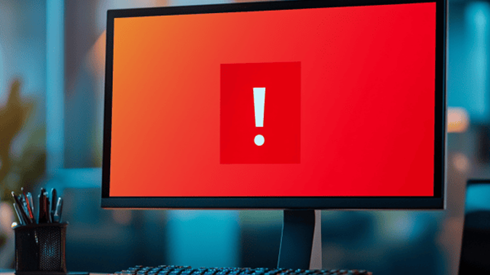Internal Education Is Key to Captive Insurance Success

March 31, 2025

At the 2025 World Captive Forum in Miami, industry professionals shared strategies for educating internal stakeholders throughout the captive insurance life cycle. The session, titled "Building Out Your Why: How to Educate Internally," featured Anne Marie Towle of Hylant, Melissa Hollingsworth of the Los Angeles Unified School District (LAUSD), and Samantha Poulin of Milliman.
Organizations evaluating captive formation must first assess risk appetite and tolerance. This includes considering program control; financial risk; retained earnings; earnings before interest, taxes, depreciation, and amortization (EBITDA); net cash flow; and other organizational key performance indicators. Risk appetite varies depending on company philosophy, business goals, and shareholder expectations.
"Risk appetite can vary dramatically," said Ms. Towle. "It's often tempered by broader business goals."
Ms. Poulin noted that most companies move gradually toward greater retention. "It's more common to see organizations coming from a deductible policy or starting in a group captive. Jumping straight to full retention is the exception, not the norm."
Organizations should identify internal stakeholders early. These typically include risk management, finance, human resources (HR), legal, information technology (IT), and executive leadership. Captives often impact multiple departments, requiring coordination from the outset.
"I gather my allies," said Ms. Hollingsworth. "That includes my board, [chief financial officer], HR, and IT—especially for cyber coverage. I ask them what keeps them up at night."
Actuaries rely on this input when performing modeling and feasibility studies. "Everybody has their own sandbox," said Ms. Poulin. "We need to know what each department is concerned about in order to provide accurate and useful analyses."
A defined strategy is needed before presenting the captive concept to senior leadership. This plan should include internal pain points, financial objectives, and long-term goals. Executive summaries should be high-level and supported by detailed reports, feasibility studies, and actuarial input.
"My executive summary is very succinct, but I always include the supporting details," said Ms. Hollingsworth. "That helps answer questions before they arise."
Captive service providers—including actuaries, brokers, and captive managers—can help present financial and structural information to the C-suite. External validation often helps executives become more comfortable with captive decisions.
The LAUSD captive was formed in 2024 after more than a decade of internal discussion. It launched in 90 days with $1 billion in initial capitalization. Initial coverages included general liability, auto, and workers compensation. The district has since added more complex lines, including an owner-controlled insurance program (OCIP) and property coverage, despite significant wildfire risk.
Strategic Response to Wildfire Risk
Following the addition of property coverage, LAUSD faced a major wildfire event that tested the captive's preparedness. Prior to the incident, the organization increased its property deductible from $2.5 million to $17.5 million, based on actuarial analysis and internal risk strategy.
"We made the decision strategically, with actuarial support," said Ms. Hollingsworth. "We were well prepared for it, and that is the key every single time with every line of coverage you analyze to put into your captive—you have to be prepared."
The captive structure enabled LAUSD to fund the cleanup and early rebuilding phases without accessing its general fund. "We're using the surplus capital in our captive to help finance this wildfire situation," Ms. Hollingsworth said. "We don't have to touch our general fund."
The ability to control and protect these funds was one of the driving forces behind the formation of the captive. "They were trying to find a way where they could segregate those funds from the general fund so no one could touch it except for us," she added. "It worked out really well."
Ongoing involvement from executive leadership is critical. Captive leaders should meet regularly with the C-suite to review performance and strategy.
"You need to meet at least semiannually with your executives to evaluate the captive's performance," said Ms. Towle.
Ms. Hollingsworth meets monthly with the board. "The cadence helps drive progress and keeps everyone aligned," she said. "You can't just put the captive on a shelf and revisit it once a year."
Actuarial services continue after formation. In addition to annual reserve studies, actuaries can perform more frequent analyses to track performance. Actual versus expected analyses help identify trends and provide midyear insights.
"A lot of organizations don't like waiting a full year to see how they're doing," said Ms. Poulin. "We can evaluate performance quarterly or semiannually to help inform decision-making."
Turnover in key stakeholder roles is expected over time. Risk managers should establish continuity plans, board education programs, and clear documentation of the captive's purpose and operations.
"You don't want your captive to rely on just one person," said Ms. Towle. "Board education and written guiding principles are essential."
"Board membership alone doesn't ensure familiarity with captive governance," Ms. Hollingsworth said. "Ongoing education is essential to help board members make informed decisions."
Ms. Poulin described a recent client transition that involved bringing in the incoming risk manager several months before the outgoing one retired. Both participated in meetings, and service providers were looped in for a smooth transition.
Captive operations require close coordination with service providers and regulators. Responsibilities include issuing and reviewing audited financials, actuarial certifications, tax filings, reinsurance agreements, and investment planning. Captive leaders must treat the entity as a functioning insurance company with governance procedures in place.
"We're operating this like another company in our portfolio," said Ms. Hollingsworth. "We're constantly evaluating and adjusting the program."
Executive education and transparency remain priorities. "When the board stays involved, it makes your life easier," Ms. Hollingsworth said. "Communication has been key to growing our captive program."
The panel emphasized that captive success depends on alignment, planning, and education. "Everyone needs to communicate and have the same information," said Ms. Hollingsworth. "When that happens, you can really build something that works."
March 31, 2025

